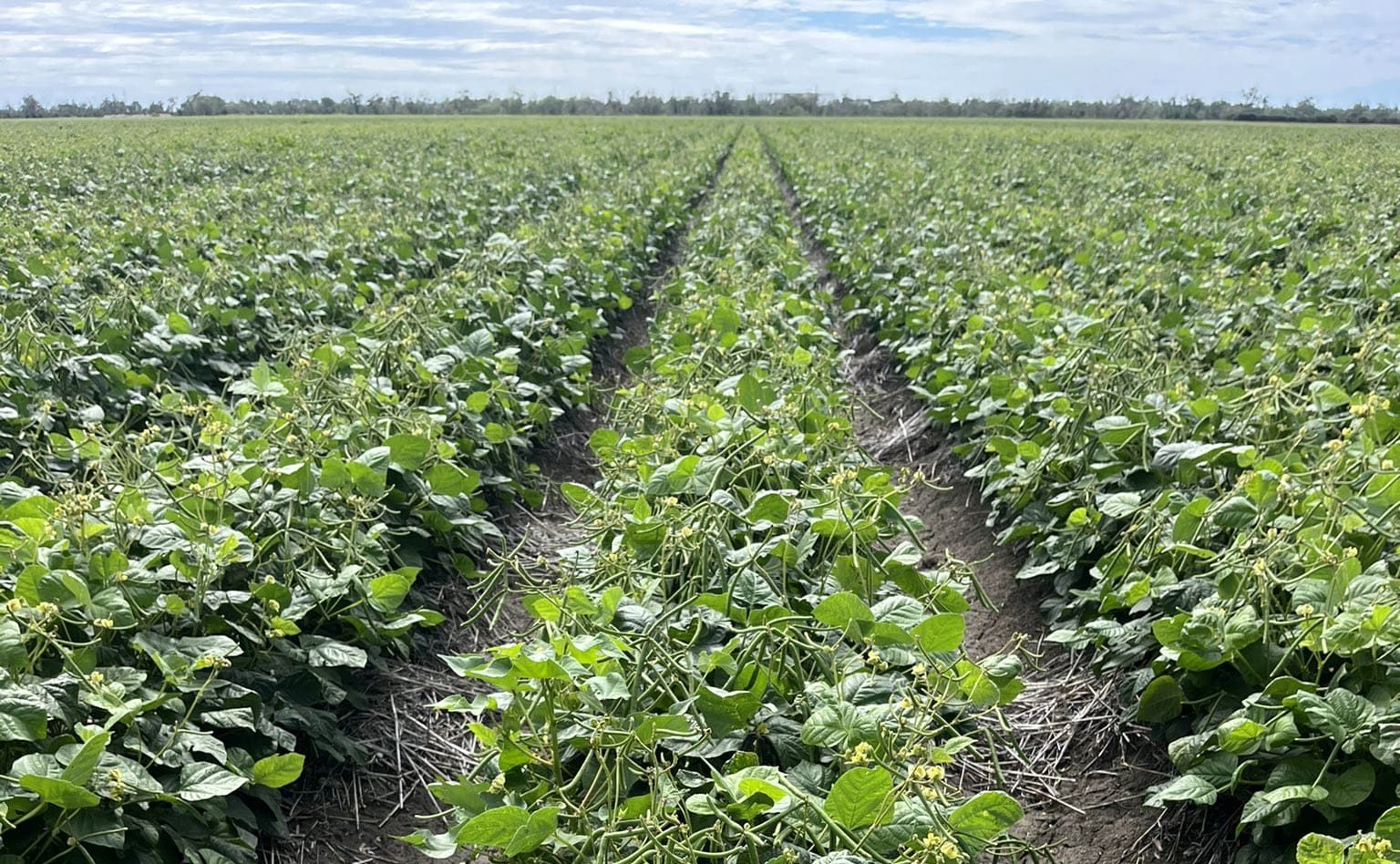
A flourishing mungbean crop in Mungindi. Photo: Sam Heagney
THE mungbean harvest in Queensland and New South Wales is well advanced, and presenting a mixed bag across key growing regions.
In southern Queensland, consecutive rain events in late March and early April have reduced mungbean yields and quality.
However, some crops harvested before or between the falls have exceeded processor expectations.
Northern NSW crops were hit by one rain event earlier this month, with quality less impacted, and solid yields of 1.5-2 tonnes per hectare expected.
After a run of fine weather, the Central Qld harvest is almost complete, with average yields and good quality.
Disappointment in southern Qld
Parts of southern Qld are five to six weeks into the mungbean harvest.
Pulse Australia northern extension agronomist Paul McIntosh said the two weather events in recent weeks had a significant impact on crops.
Southern Qld cropping regions recorded falls up to 200mm for the week ending April 11, according to ABARES Weekly Australian Climate, Water and Agricultural Update.
These totals were on top of 30-110mm recorded in late March.
Before these falls, Mr McIntosh said the Australian mungbean crop was close to breaking the 2016 record production of 150,000t.
“The rain in Queensland has certainly reduced the quality and yields of our south Queensland mungbean crop with those two rain events in consecutive weeks,” Mr McIntosh said.
While the mungbeans could have withstood short bursts of storm rain, Mr McIntosh said the prolonged falls were detrimental to the crops.
PB Agrifood general manager Ben McIntyre said receivals into the Toowoomba facility had been sporadic.
“For us, it’s been fairly spread out and it’s ticking along alright,” Mr McIntyre said.
He said growers had opted to harvest in line with the rain events, with increased loads received before the first falls in March and the second two weeks later.
Mr McIntyre said the quality of mungbeans received after the first rain “held up better than expected”.
“We have only seen one load after this second lot of rain…and it looked like we were able to do something with it to get a reasonable return for the grower.
“At this stage of the game…it doesn’t look all doom and gloom.”
Mr McIntyre said there were still many crops left to harvest, and there were reports of severely impacted crops further west near Dalby and Condamine.
Australian Mungbean Association vice president and Wood’s Group accumulation and sales manager Steve Foran said he had seen a lot of mungbeans that “hadn’t met manufacturing standards”.
“It has all got a bit ugly around the place, that’s for sure,” Mr Foran said.
He reassured growers that “there was always a market” for downgraded crops, but pricing would reflect the standard.
He estimated growers with below manufacturing level crops would receive “anywhere from $500/t inward weight with no grading charges up to around $950/t graded weight”.
This is compared to around $1100-$1150/t for manufacturing and $1200-$1225/t for processing quality.
NSW harvest under way
Mr McIntosh said the crops in northern NSW and CQ were not hit with consecutive rain events, and yields and quality have been good.
“There are positive yields in CQ and northern NSW.
“We’re talking 1.5-2t to the hectare in those locations which is pretty handy.”
Mr McIntosh estimated that about 50pc of the NSW crop has been harvested.
Moree-based Shepherd Grain director Todd Jorgensen said he had seen some “very profitable” crops.
Mr Jorgensen said many crops were impacted by the rain, but not to the extent of those in southern Qld.
“Even after the rain, most of the crops are not doing horribly, the quality is manufacturing, and the grading loss on most of them hasn’t been too bad,” Mr Jorgensen said.
“Probably the best dryland yield we have got is 1.7t/ha which is a lovely number, and that crop went processing,” Mr Jorgensen said.
Processing investment
Shepherd Grain grades and packs commodities including mungbeans at its Moree site, and recently commisioned its mungbean-processing plant.
Mr Jorgensen said it cleans and grades mungbeans and has been designed to increase returns for growers.
“Our capacity has gone way up, and, because of the new equipment, our grading losses are better and we’re able to turn farmers over a lot faster.
He said NSW growers are consistently improving practices for growing mungbeans and ways to make them a profitable part of a cropping rotation.
“The volume of mungbeans in NSW has dropped off over the last seven to ten years, so I guess we are hoping to revive that with our plant in Moree.”
CQ near season’s end
Thanks to missing the strong rainfall events during key growing times, CQ growers are nearing the end of a smooth harvest period.
Elders Biloela agronomist Gavin Lotz said most of his growers were pleased with the season, despite patchy rainfall reducing expectations of above-average yields.
“For most of my clients we have been making the district average and we have been very happy with that,” Mr Lotz said.
He said for the Biloela district, yields just above 1t/ha were considered average.
“We haven’t had the rain, so we have been getting the quality.
“Most of my clients planted in January and some in February.
“We are in the middle of harvest and most of my crops have been sprayed out and harvested or are due for spray-out in the coming week or two.
“Our season is wrapping up very quickly.”
Grain Central: Get our free news straight to your inbox – Click here



HAVE YOUR SAY